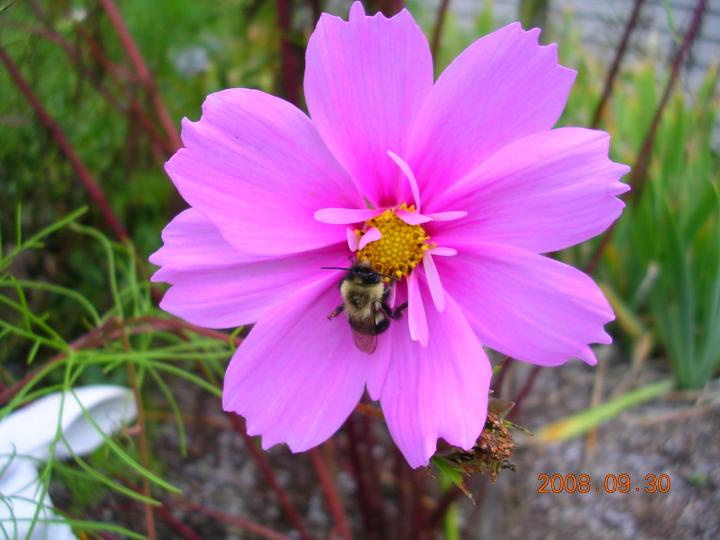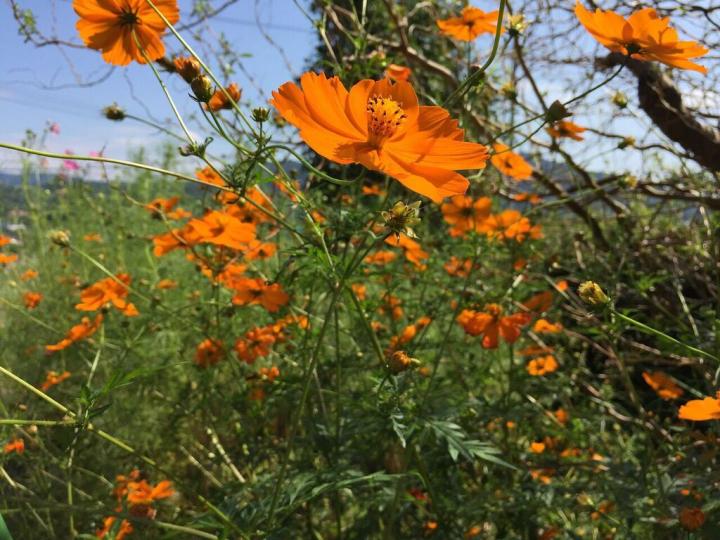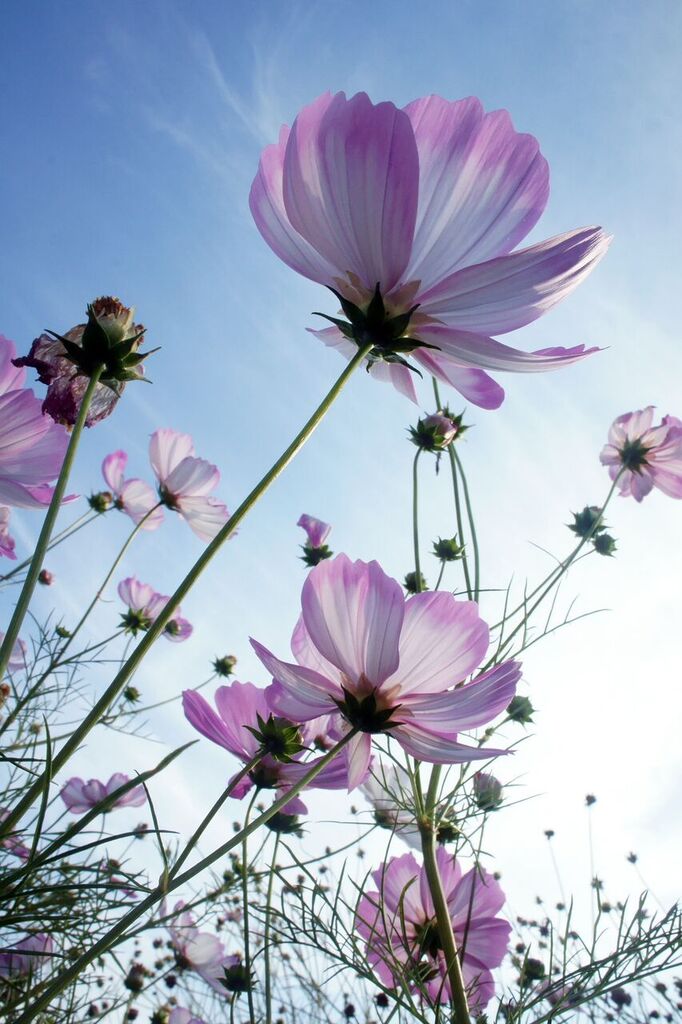 Linda Daggett
Linda Daggett
Cosmos are annuals, grown for their showy flowers. The flowerheads may be bowl– or open cup–shaped and are atop of long stems. Cosmos are easy to grow and make good border or container plants. They make for good decorations in flower arrangements and also attract birds, bees, and butterflies to your garden.
Cosmos produce 3- to 5-inch daisylike flowers in various colors, including pink, orange, red and yellow, white, and maroon. These beautiful plants can reach 6 feet tall.
Planting
- If you want a head start, you can plant cosmos indoors 4 to 6 weeks before the last spring frost in trays or pots with a good seed-starting mixture. Seedlings grow fast, so move them into 5-inch pots as soon as they’re 3 or 4 inches tall.
- Plant seeds in moist, well-drained soil about ¼-inch deep and 12–18 inches apart after the danger of frost has passed. You can also plant transplants instead of seeds. They also like soil that is not too rich, as rich soil will encourage foliage at the expense of bloom.
- They can tolerate warm, dry weather.
- Depending on the type of flower, cosmos can grow anywhere between 18–60 inches tall.
- If you are growing cosmos from seeds, be mindful that it takes about 7 weeks to first bloom. After that, though, your flowers should continue to bloom until the next frost.
- If you let the spiky-brown seed heads blow away during the fall, cosmos might sow themselves throughout your garden.

Let the spiky-brown seed heads blow where they will and you may find your garden full of self-sown cosmos.
Care
- In order to prolong flowering, you should deadhead the plants (remove the dead/faded flowers). This speeds up flower development and aids branching.
- Because some of these plants can grow really tall, staking may be necessary. Offer them protection from strong winds, encourage balanced branching by pinching out central shoots or stem tips, or stake them. Growing them against a fence can also provide the necessary support.
- Water regularly, but make sure you don’t over-water the plants. Over-watering and over-fertilization can lead to plants with fewer flowers. Cosmos can tolerate dry soil, even in a hot, arid, sunbaked spot.
- Cosmos beds may become weedy due to the fact that they self-seed, so remember to check them.

Apart from needing at least a half-day of sunshine, cosmos seems to thrive on neglect.
Pests/Diseases
- Stem canker
- Powdery mildew
- Gray mold
- Aphids
Harvest/Storage
- To harvest more seeds, remember to leave a few flowers on the plant because they will self-seed.
- You can cut the flowers off anytime after blooming, but it’s best to pick some right when the petals have opened.
- If you cut the blossoms on good stems when they first open, they’ll last more than a week in water. Simply strip off the lower leaves and put them in a vase.

Cosmos is the heart of a summer garden, and it adds a distinct elegance to bouquets in everything from jelly jars to silver urns.
Recommended Varieties
- ‘Picotee’ have pretty white flowers with a crimson border around the edge of the flower (some are also flecked in crimson).
- ‘Sea Shells’ have white, pink, or red tube-shaped petals.
- ‘Purity’ is a beautiful, classic, white flower that looks spectacular growing against the dark-maroon ‘Niger’ hollyhock or purple basil.
- ‘Cosmos Sonata Series’ looks especially good with Bells of Ireland.
- ‘Chocolate’ cosmos adds distinction to a white campanula, dianthus, or ‘Moonshine’ achillea.
- Tall cosmos are best for the back of the garden and filling in mixed borders among perennials such as foxgloves, phlox, delphiniums, and daisies, as well as annuals such as poppies, cleome, and asters.
- Dwarf cosmos, such as the Ladybird series, are great companions for zinnias, Johnny jump-ups, pansies, alchemilla, or dark-blue morning glory.
Wit & Wisdom
Cosmos is one of the October birth flowers.






 Linda Daggett
Linda Daggett


